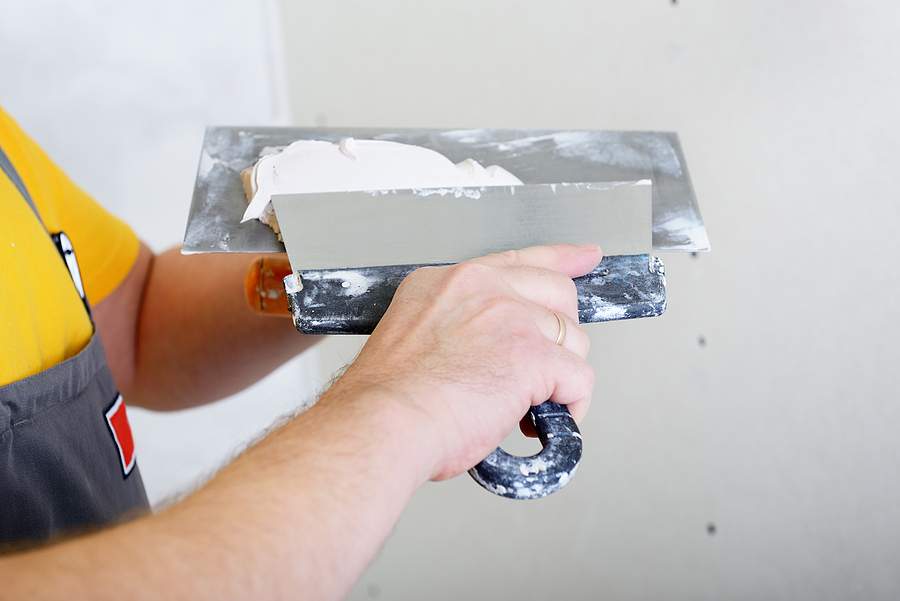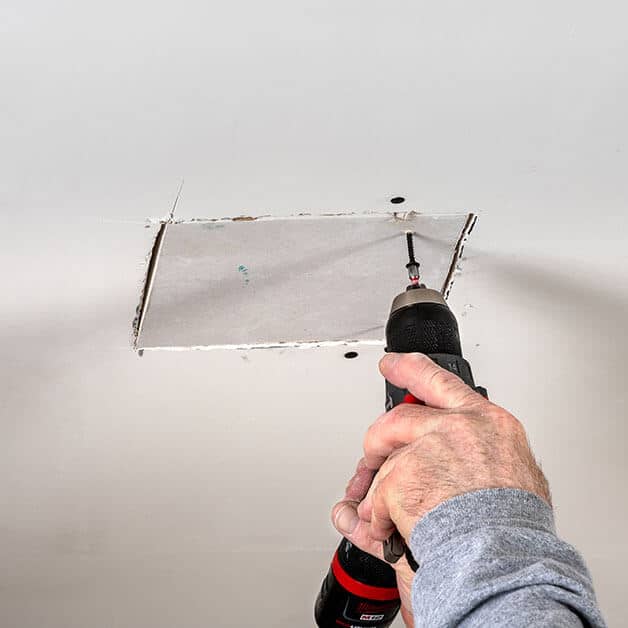Essential Tips for Effective Drywall Repair and Installment Techniques
Effective drywall repair work and setup needs a careful technique. Understanding the sorts of drywall and having the right tools is crucial. Appropriate methods and accurate measurements can considerably affect the end result. Lots of overlook essential steps like taping and fining sand, which can make or damage the final look. As tasks proceed, common obstacles may arise that call for focus. Checking out these suggestions can lead to a more effective and refined surface.
Understanding Various Kinds of Drywall
Understanding the various sorts of drywall is essential for any successful fixing or setup job. Drywall, frequently referred to as gypsum board, comes in a number of selections tailored for specific applications. Criterion drywall is one of the most extensively used kind, perfect for basic interior wall surfaces and ceilings. Moisture-resistant drywall, usually eco-friendly in shade, is designed for locations prone to moisture, such as shower rooms and kitchen areas. Fire-resistant drywall, typically tinted pink or purple, is engineered to hold up against higher temperatures and is usually made use of in garages or near heaters. Furthermore, soundproof drywall assists lower noise transmission, making it ideal for multi-family homes or tape-recording studios. Specialized drywall, like cement board, is utilized in damp areas like showers or bathtub borders. Comprehending these kinds assists in selecting the best product for each task, guaranteeing longevity and performance out of commission or brand-new installments.
Necessary Tools for Drywall Repair and Setup
Having the right tools is essential for reliable drywall repair and installment. A quality utility knife is crucial for reducing drywall sheets exactly. A drywall T-square helps guarantee straight sides, while a taping knife is essential for using joint substance efficiently over seams. In addition, a drywall saw permits reducing out damaged sections or suitable drywall around fixtures.
For hanging drywall, a power drill with drywall screws is indispensable, as it enables secure and fast installment. A level is additionally important to validate that the drywall is straight and effectively straightened. Once it has actually dried out, a sanding block or post sander is vital for smoothing out joint compound. Finally, a measuring tape is critical for exact measurements, avoiding waste and guaranteeing an appropriate fit. Equipped with these devices, individuals can deal with drywall tasks efficiently, bring about professional-looking outcomes.
Step-by-Step Overview to Fixing Holes and Cracks
When addressing holes and fractures in drywall, having the right devices and materials is important for an effective fixing. This guide outlines the required products and offers a clear, detailed process to properly recover the surface. Comprehending these aspects will certainly aid guarantee a smooth finish and durable outcomes.
Tools and Products Needed
A well-appointed toolkit is important for efficient drywall repair service and installment. Secret tools consist of an energy blade for cutting drywall, a measuring tape to assure precise sizing, and a drywall saw for bigger openings. A putty blade is essential for applying joint substance efficiently, while a sanding block or post sander aids achieve a smooth coating. For patching, a roll of fiberglass mesh tape or paper tape is required to enhance joints. Additionally, a drill and screws are required for protecting new drywall pieces. Crucial products contain joint substance, guide, and paint to finish the repair work. Having these devices and products handy guarantees a smoother, much more effective repair procedure, producing professional-looking outcomes.
Repair Work Refine Actions
Repairing holes and cracks in drywall calls for a systematic approach to ensure a smooth coating. The area bordering the damage ought to be cleaned up thoroughly to remove dust and particles. Next off, for tiny splits, a putty blade is utilized to use a joint substance uniformly over the area. For larger holes, a patch is this necessary; the harmed area is removed, and a new piece of drywall is suited area, protected with screws. When the patch is in setting, joint substance is put on blend the edges. After drying, sanding the location smooth is essential. Ultimately, the repaired surface needs to be topped and painted to match the bordering wall surface, ensuring a low-profile repair work.
Strategies for Putting Up Drywall Panels
Installing drywall panels needs careful preparation and exact implementation to assure a specialist and smooth coating. First, it is vital to measure the wall surface space accurately and reduce the panels to fit, ensuring that they line up with the studs. Positioning the panels horizontally is commonly advised, as this can boost the structural integrity and reduce the variety of seams.
Utilizing drywall screws, installers need to protect the panels every 16 inches along the studs, making sure a firm hold. It is vital to avoid overdriving the screws, which can damage the paper surface. For edges and edges, utilizing an utility blade permits clean cuts and a snug fit.

Finishing Touches: Taping, Mudding, and Fining sand
Once the drywall panels are firmly in position, the next crucial action involves the finishing touches of taping, mudding, and sanding. Insulation is important for producing a smooth shift between panels and hiding joints. A high quality drywall tape, either paper or fiberglass fit together, must be used over the seams, ensuring it adheres properly to the mud that will be used next.
Mudding, or applying joint compound, follows the taping process. This compound fills voids and ravel the surface. An initial layer must be applied kindly, feathering the edges to mix with the drywall. After the first coat dries out, subsequent layers might be required for a remarkable finish.
Lastly, fining sand is necessary to achieve a smooth surface. A fine-grit sandpaper should be used to carefully ravel any type of flaws. Care ought to be required to avoid over-sanding, which can harm the drywall - Interior Painting. Appropriately implemented, these finishing touches produce an expert appearance ready for painting
Tips for Keeping Your Drywall After Installment
Preserving drywall after setup is crucial to protecting its appearance and structural stability. Regular cleansing is essential; dust and dirt can build up, so mild cleaning with a wet cloth is recommended. House owners should site here also check for any kind of indicators of moisture or mold and mildew, specifically in high-humidity areas like cooking areas and bathrooms. If any kind of damage occurs, it's crucial to resolve it without delay to avoid further concerns.
Utilizing furnishings pads can assist avoid scrapes or damages from hefty items. In addition, repainting the drywall with a top quality, washable paint offers an added layer of security and makes future cleansing less complicated. Prevent utilizing abrasive cleansers or tools, as these can damage the surface area. Lastly, preserving a secure indoor climate with suitable moisture levels will certainly aid avoid breaking or deforming gradually. By complying with these suggestions, one can assure that drywall continues to be in exceptional condition for years to find.
Frequently Asked Questions
How Much Time Does Drywall Require To Totally Dry After Installment?

Can I Set Up Drywall Over Existing Drywall?
Yes, drywall can be mounted over existing drywall, yet it is crucial to guarantee the underlying surface area is safe and adequately prepared. This technique can boost insulation and minimize installment time, though it might include weight.
What Is the Best Way to Soundproof Drywall?
The most effective method to soundproof drywall entails utilizing specialized soundproofing products, such as resistant channels, acoustic caulk, and sound-dampening drywall. These strategies successfully decrease audio transmission between spaces, enhancing total acoustic performance in living areas.
Exactly how Do I Select the Right Drywall Density?
To select the appropriate drywall density, take into consideration the application and place. Criterion residential wall surfaces typically use 1/2 inch, while ceilings or specialized locations may require 5/8 inch for added toughness and soundproofing abilities.
Are There Eco-Friendly Drywall Options Available?
Yes, environment-friendly drywall options are available. These include products made from recycled products, gypsum boards with low volatile organic substances (VOCs), and those using sustainable production processes, offering environmentally-conscious options for building and renovation jobs.
Having the right tools is vital for reliable drywall repair and setup. For hanging drywall, a power drill with drywall screws is vital, as it enables safe and fast installment. Key devices consist of an utility blade for cutting drywall, a tape procedure to guarantee exact sizing, and a drywall saw for larger holes. Yes, drywall can be mounted over existing drywall, however it is important to guarantee the underlying surface is safe and secure and effectively prepared. The finest way to soundproof drywall includes making use of specialized soundproofing products, such as resilient networks, acoustic caulk, and sound-dampening drywall.